Mikolaj Binkowski
Flamingo: a Visual Language Model for Few-Shot Learning
Apr 29, 2022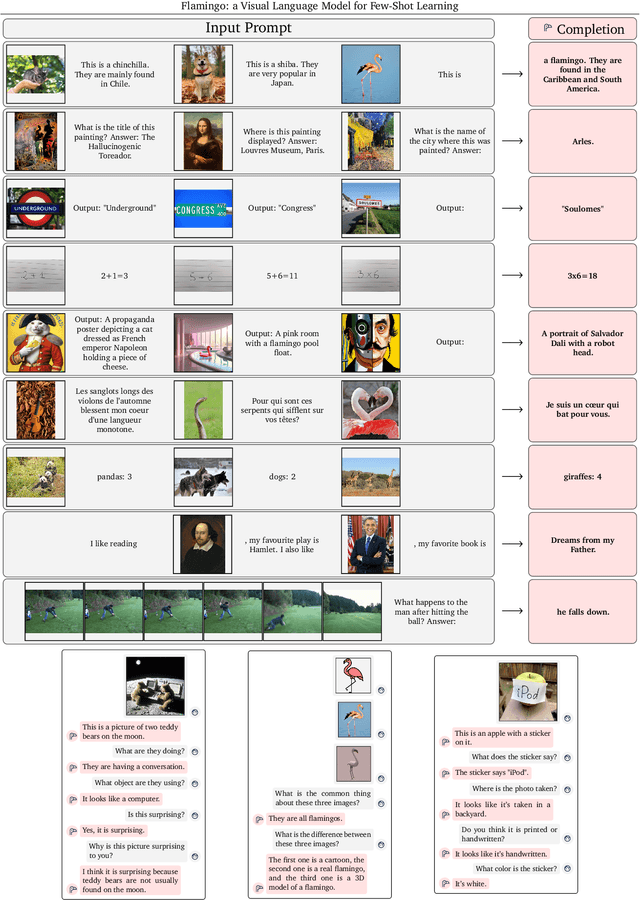

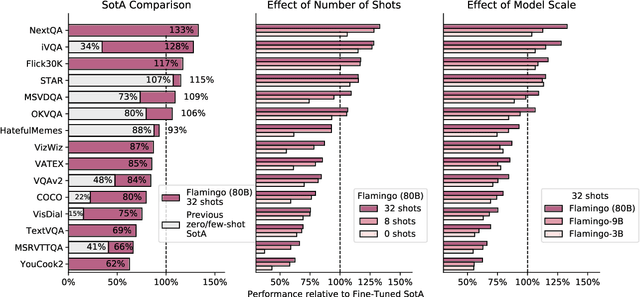
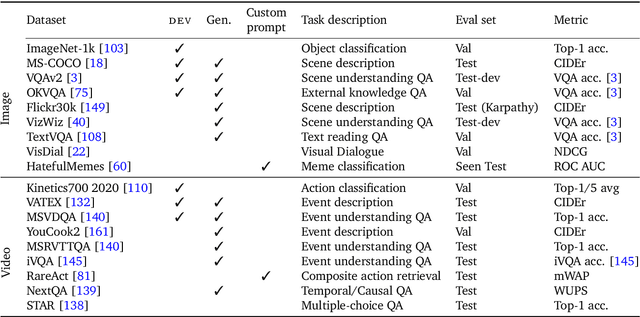
Abstract:Building models that can be rapidly adapted to numerous tasks using only a handful of annotated examples is an open challenge for multimodal machine learning research. We introduce Flamingo, a family of Visual Language Models (VLM) with this ability. Flamingo models include key architectural innovations to: (i) bridge powerful pretrained vision-only and language-only models, (ii) handle sequences of arbitrarily interleaved visual and textual data, and (iii) seamlessly ingest images or videos as inputs. Thanks to their flexibility, Flamingo models can be trained on large-scale multimodal web corpora containing arbitrarily interleaved text and images, which is key to endow them with in-context few-shot learning capabilities. We perform a thorough evaluation of the proposed Flamingo models, exploring and measuring their ability to rapidly adapt to a variety of image and video understanding benchmarks. These include open-ended tasks such as visual question-answering, where the model is prompted with a question which it has to answer, captioning tasks, which evaluate the ability to describe a scene or an event, and close-ended tasks such as multiple choice visual question-answering. For tasks lying anywhere on this spectrum, we demonstrate that a single Flamingo model can achieve a new state of the art for few-shot learning, simply by prompting the model with task-specific examples. On many of these benchmarks, Flamingo actually surpasses the performance of models that are fine-tuned on thousands of times more task-specific data.
Step-unrolled Denoising Autoencoders for Text Generation
Dec 13, 2021



Abstract:In this paper we propose a new generative model of text, Step-unrolled Denoising Autoencoder (SUNDAE), that does not rely on autoregressive models. Similarly to denoising diffusion techniques, SUNDAE is repeatedly applied on a sequence of tokens, starting from random inputs and improving them each time until convergence. We present a simple new improvement operator that converges in fewer iterations than diffusion methods, while qualitatively producing better samples on natural language datasets. SUNDAE achieves state-of-the-art results (among non-autoregressive methods) on the WMT'14 English-to-German translation task and good qualitative results on unconditional language modeling on the Colossal Cleaned Common Crawl dataset and a dataset of Python code from GitHub. The non-autoregressive nature of SUNDAE opens up possibilities beyond left-to-right prompted generation, by filling in arbitrary blank patterns in a template.
A Deep Learning Approach for Characterizing Major Galaxy Mergers
Feb 09, 2021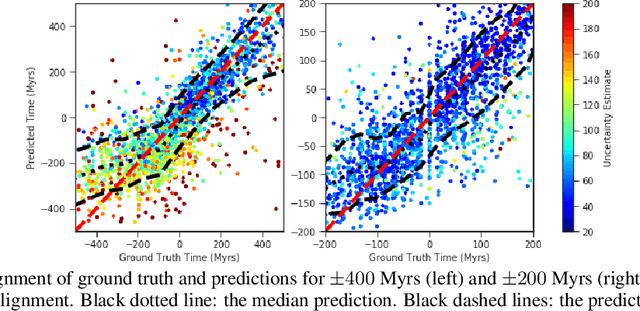

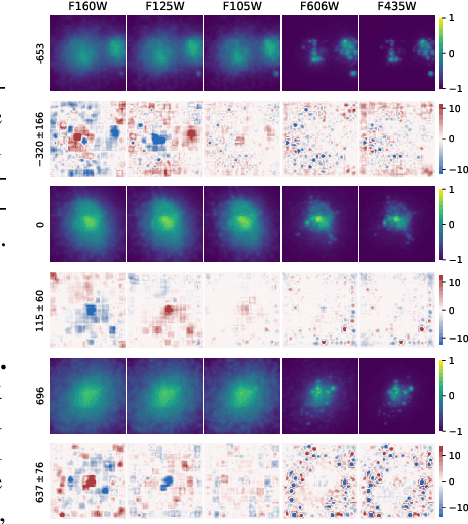
Abstract:Fine-grained estimation of galaxy merger stages from observations is a key problem useful for validation of our current theoretical understanding of galaxy formation. To this end, we demonstrate a CNN-based regression model that is able to predict, for the first time, using a single image, the merger stage relative to the first perigee passage with a median error of 38.3 million years (Myrs) over a period of 400 Myrs. This model uses no specific dynamical modeling and learns only from simulated merger events. We show that our model provides reasonable estimates on real observations, approximately matching prior estimates provided by detailed dynamical modeling. We provide a preliminary interpretability analysis of our models, and demonstrate first steps toward calibrated uncertainty estimation.
 Add to Chrome
Add to Chrome Add to Firefox
Add to Firefox Add to Edge
Add to Edge